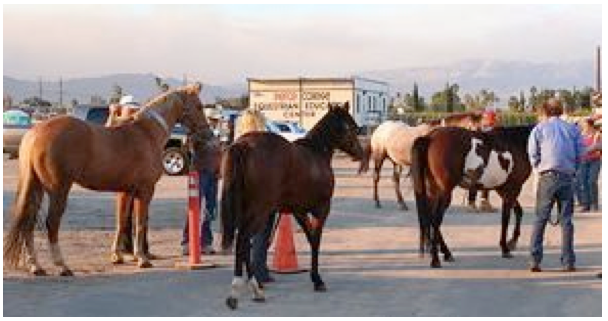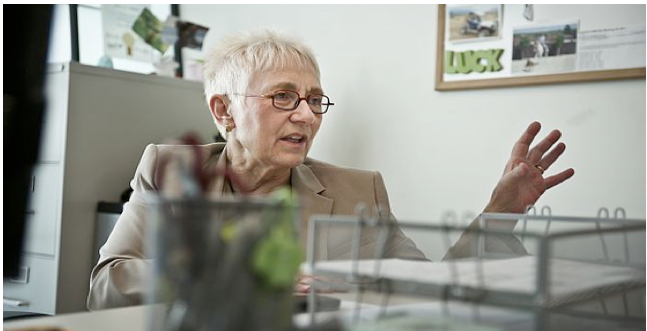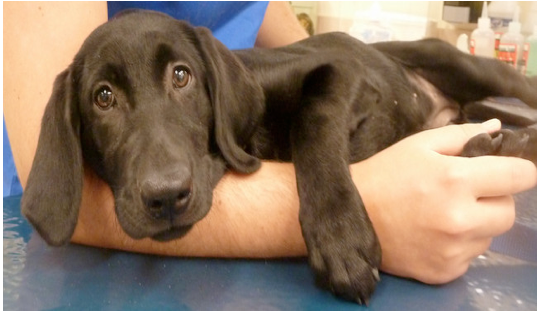LA Pet and Horse Owners May be on Their Own in Fires or Disasters
ANIMAL WATCH-Before Brenda Barnette was hired as General Manager of LA Animal Services in 2010, the mantra for the Department was, at all times, “officer, animal and public safety.” Whenever there was a major disaster such as a fire or an earthquake, Animal Control Officers were placed on alert at all city shelters -- whether of or not they were ultimately dispatched to the emergency scene.
The Animal Services’ Emergency Response Coordinator (for many years the well-known and highly experienced Captain Karen Knipscheer), once notified that a fire/disaster command center had been set up, and aware that the focus of fire and police personnel is to stop destruction and evacuate humans, would either go to the location or send a representative to advise that LA Animal Services was available to help with any animal-related need.
But, in the current LAAS “Department Emergency Plan,” it states that, The Department of Animal Services will send an Agency Representative (AR) to the Police [Fire/Los Angeles County Animal Care and Control] Incident Command Post “ONLY when requested…” (Emphasis added.)
On Monday, May 23, at 2:20 pm, a fast-moving fire was reported near the 13000 block of Wheatland Avenue above Lake View Terrace and at the border of the Angeles National Forest. Hundreds of city, county and federal firefighters joined to protect the multi-jurisdictional area. Spotter planes and water-dropping helicopters helped battle the blaze, which burned a total of about 185 acres.
On that day, prompt response, the level of preparedness and expertise, and the wind-direction blew the fire away from structures and into the National Forest; no evacuation was required.
However, notably absent to those who worry about pets and other animals in these situations (Lake View Terrace and other Valley areas still have substantial equine communities) was any announcement that LA Animal Services was on standby in case the wind-blown fire changed its course and headed toward populated areas.
City fire Capt. Daniel Curry told KTLA. “The fire spread very rapidly due to the steep terrain and the status of the fuels in the area.” The south end of the fire, closer to homes, was part of the containment line, he said. Special attention was given to protecting structures in the Little Tujunga Canyon Road to Big Tujunga Canyon Road areas "as a precaution," according to Los Angeles Fire Department’s Erik Scott.
Angelenos are aware that fire season is approaching and that the “Big One” may rock Los Angeles at any time, putting their homes instantly in danger. The City advises us to be prepared. That message also applies to pets and large animals who will need to leave disaster areas with their owners or to be evacuated by LA Animal Services and taken to safety.
But, recent changes in the allocation of funds for LA Animal Services by the Mayor and City Council have resulted in a lack of resources that have been the stalwarts of safety for animals during past emergencies. City Hall doesn’t seem to care much.
While the Council Budget & Finance Committee easily allotted $800,000 of taxpayer money for a Feral Cat/Trap-Neuter-Release/Relocate Report so that feral cats can be released to roam unimpeded on residential and commercial property throughout the city and be sterilized using City funds, it rejected a request for ten badly needed animal control trucks as part of the replacement of the dilapidated and unsafe LAAS fleet not replaced since 2000 and 2003.
The current situation is that the Animal Services’ entire fleet of animal control trucks (animal collection vehicles) needs to be replaced immediately. Some can no longer be driven safely on the streets and officers state that, even when sent for repair, they seem to break down almost immediately.
Dangerous enough under normal conditions, but should trucks that break down or suddenly not start, with failing brakes and doors that fly open (both on the passenger cab and animal compartments) be allowed behind fire lines?
This lack of assistance by Animal Control Officers to pick up pets trapped in homes during a fire or disaster, or to catch frightened animals that have escaped, could leave beloved furry and feathered family members behind to die.
The Department is expecting (after unconscionable delays) to hire 30 new animal control officers soon; however, if there aren’t enough vehicles, they will not be able to work in the field. Even with 13 anticipated new vehicles that are tentatively expected within ten months, this will be fraction of what is needed to replace the current decrepit fleet.
Even now, animal control officers that could be helping injured and stray animals and doing humane investigations are reportedly sitting in the shelters because of a lack of vehicles.
This should be no surprise to Councilman Paul Koretz.
During a report to the Personnel and Animal Welfare Committee (chaired by Koretz) on September 16, 2015, at which Koretz feigned great concern about heat affecting animals in collection vehicles with inadequate ventilation or cooling, he was advised that the officers, animals and the public are endangered by the deterioration and poor mechanical condition of the fleet of collection trucks. General Services Fleet Director Richard Coulsen confirmed there are repeated breakdowns while officers are driving trucks which are “falling apart.” Koretz has never agendized this matter again.
Coulsen announced at the May 24 LAAS Commission meeting that there is now authorization to order twenty-two trucks by the end of the 2016-17 fiscal year for another partial fleet replacement. Director of Field Operations Mark Salazar has subsequently recited a litany of fiascos occurring from LAAS designing totally unsuitable vehicles and then receiving new trucks that have such serious defects they have been returned to the manufacturer. In addition, he has noted the painfully slow process of upgrading vents on ten 2008 animal-rescue vans currently not in use because they lack an alternate air-circulation system. This left Commissioners and attendees obviously confused.
After Salazar’s additional lengthy and convoluted excuses for all these mistakes, frustrated activist Michael Bell stated in public comment, “…I didn’t understand anything you said. It seemed one thing piled on another…this is just silliness.” He encouraged the Commission to “just get this done because it is obvious that General Services and Officer Salazar are not doing it.”
With the current deficit in officers and equipment (the Department also has 33% less horse-hauling vehicles,) it is important for all small and large-animal owners to realize that, if a disaster hits, you may be on your own.
The following are some basic tips from experts for saving or safeguarding your pets and horses in a disaster. However, since each situation and animal is different, please talk with your neighbors, experts and community advisors and/or go on the Internet for a wide variety of information. (Plus, we invite any readers to leave comments to help.)
Devise a disaster plan in advance, which includes -- but is not limited to -- these basics, and please microchip your pets and horses.
SMALL ANIMALS:
- Have a strong kennel/travel cage that can be securely latched ready for each pet. (Keep it in a place easy to access quickly.)
- Store or fill containers with enough water to sustain your pet for several days.
- Have a tightly closed container filled with enough food for each pet (use the kind your pet regularly eats) for several da
- Keep a fresh supply of medications your pet takes (enough for several days).
- Have some toys/blankets familiar to the pet ready to take.
- Practice placing your pet in a kennel/cage at least monthly, so that it is comfortable with the process.
Rotate/replace food/water/meds every 3 to 6 months. - Have your pets’ licensing/microchip info handy to take, along with a photo of you with your animal(s). Keep contact information current on microchip and license.
LARGE ANIMALS:
- Have a plentiful backup supply of water, and plenty of buckets available to take with you.
- Halter/lead rope for every animal. (For smaller farm animals, keep transfer cages easily available.)
- Training and practice. Make sure your animal loads in a trailer quickly and easily before an incident occurs.
- Have an evacuation plan in place. Know where you expect to take your animal(s) and practice ahead of time.
- Have special feed or medications set aside with easy access in an emergency.
- Have your horses microchipped and update the contact information regularly.
- Have any licensing/other info ready to take with you, along with a photo of you with your horse, showing any special markings on the animal.
(Animal activist Phyllis M. Daugherty writes for CityWatch and is a contributing writer to opposingviews.com. She lives in Los Angeles.) Edited for CityWatch by Linda Abrams.














